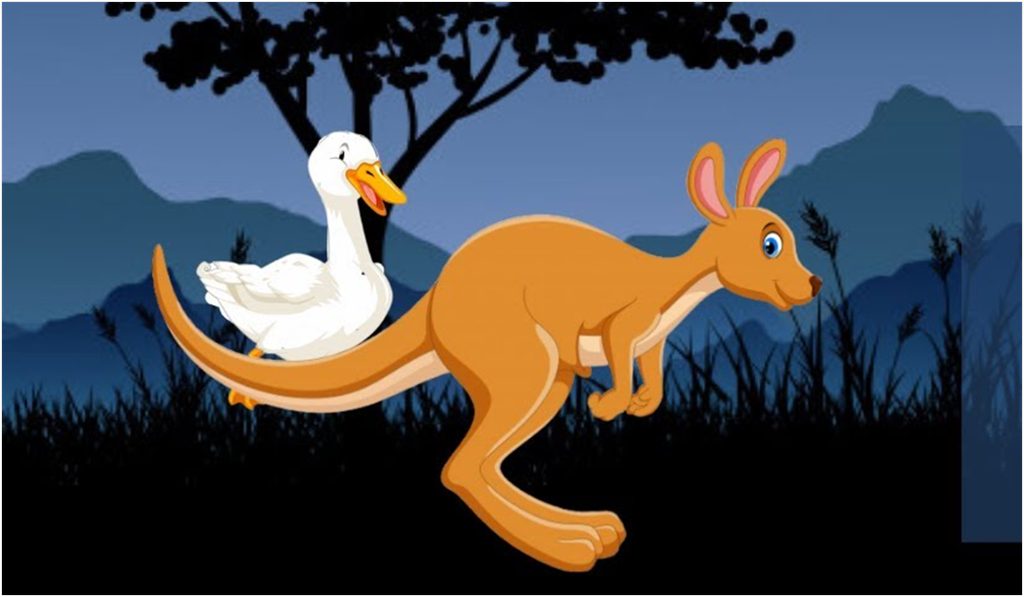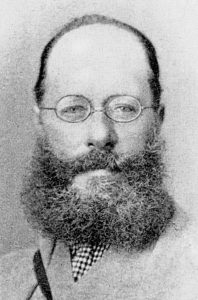Poem-7
The Duck and The Kangaroos
By Edward Lear

The Duck and The Kangaroo Poem Introduction
The poem elaborates on a duck's desire to leave the confines of the pond and travel the world like the kangaroo. The duck requests that the kangaroo take it on a trip and solve the problems that the kangaroo will face.
The Duck and The Kangaroo Poem Summary
The poem describes a conversation between a duck and a kangaroo. The duck admires the kangaroo's ability to hop around and visit different places. The duck dislikes the pond because it has to stay there indefinitely. The duck asks the kangaroo to make it sit on its back and travel across lands and seas to places like the Dee and the Jelly Bo Lee. It promises that it will remain silent and only quack. The kangaroo responds that it will have to think about it because the duck's wet and cold feet may cause body pains – rheumatism.
The duck claims to have made plans for the kangaroo's safety. It had four pairs of worsted socks that fit the web – shaped feet perfectly. It would also wear a cloak to protect itself from the cold weather and smoke one cigar per day. The duck adores the kangaroo and wishes to ensure its well – being. The kangaroo agrees to accompany the duck on a journey. It requests that the duck sit firmly and not move. The duck is sited on the kangaroo's back. The kangaroo begins with a hop and travels around the world three times. They both enjoy each other's company.
The Duck and The Kangaroo Poem Explanation
Said the Duck to the Kangaroo,
“Good gracious! how you hop!
Over the fields and the water too,
As if you never would stop!
My life is a bore in this nasty pond,
And I long to go out in the world beyond!
I wish I could hop like you!”
Said the Duck to the Kangaroo.
- Nasty: unpleasant, bad
The duck is astonished by the kangaroo's movement. It stated that the kangaroo could hop indefinitely across fields and bodies of water. The duck's life was monotonous because it spent all of its time in the pond. It wished to see the world beyond the pond's boundaries. It aspires to be able to hop like a kangaroo.
“Please give me a ride on your back!”
Said the Duck to the Kangaroo.
“I would sit quite still, and say nothing but ‘Quack’,
The whole of the long day through!
And we’d go to the Dee, and the Jelly Bo Lee,
Over the land, and over the sea;
Please take me a ride! O do!”
Said the Duck to the Kangaroo.
- Quack: sound made by the duck
The duck asks the kangaroo to carry it on its back. It stated that it would sit quietly and quack all day. As Dee and Jelly Bo Lee, the duck lists the places they would visit. It goes on to say that they would hop across land and sea.
Said the Kangaroo to the Duck,
“This requires some little reflection;
Perhaps on the whole it might bring me luck,
And there seems but one objection,
Which is, if you’ll let me speak so bold,
Your feet are unpleasantly wet and cold,
And would probably give me the roo-
Matiz!” said the Kangaroo.
- Reflection: thought, pondering
- Roo-matiz: refers to the disease of rheumatism
The kangaroo responded that it needed to think about it. The idea could be beneficial to him, but he had one objection: the duck's wet and cold feet could cause it pain.
Said the Duck, “As I sat on the rocks,
I have thought over that completely,
And I bought four pairs of worsted socks
Which fit my web-feet neatly.
And to keep out the cold I’ve bought a cloak,
And every day a cigar I’ll smoke,
All to follow my own dear true
Love of a Kangaroo!”
- Cloak: shrug
The duck explained that it had thought about it while sitting on the rocks during the day. To avoid this, the duck had purchased four pairs of worsted socks that fit its web-shaped feet perfectly. To keep warm, it would wear a shrug and smoke a cigar every day. The duck would go to long way in protecting the kangaroo because it was a beloved animal.
Said the Kangaroo, “I’m ready!
All in the moonlight pale;
But to balance me well, dear Duck, sit steady!
And quite at the end of my tail!”
So away they went with a hop and a bound,
And they hopped the whole world three times round;
And who so happy — O who,
As the Duck and the Kangaroo?
The kangaroo was pleased with the duck's response and ready for ride. They began their journey with a hop at night, when the sky was filled with the pale light of the moon. The kangaroo asked the duck to hold it tightly, and they travelled three times around the world. They both enjoyed each other's company.
The Duck and The Kangaroo Poem Literary Devices
1. Rhyme scheme
Stanza 1 – ababccaa
Stanza 2 – ababccbb
Stanza 3, 4, 5 – ababccdd
2. Alliteration – The repetition of a consonant sound at the start of two or more closely placed words.
a) Good gracious- ‘g’
b) how you hop – ‘h’
c) sit quite still, and say – ‘s’
d) But to balance- ‘b’
e) dear duck – ‘d’
f) whole world – ‘w’
3. Anaphora- When the same word is used at the start of 2 or more consecutive lines.
Instances of anaphora in the poem are as follows –
a) And to keep out the cold I’ve bought a cloak,
And every day a cigar I’ll smoke,
b) And they hopped the whole world three times round;
And who so happy — O who,
Both the pairs of sentences begin with ‘and’.
4. Refrain- the use of a musical rhyming sentence throughout the poem. “Said the duck to the kangaroo” has been repeated to lay stress on the request made by the duck to the kangaroo.
5. Enjambment – When the same sentence continues in two or more lines.
Instances of enjambment in the poem are as follows –
a) “And I bought four pairs of worsted socks
Which fit my web-feet neatly.”
b) “All to follow my own dear true
Love of a Kangaroo!”
About the Poet

Edward Lear (1812-1888) was an English artist, illustrator, author, and poet best known for his literary nonsense in poetry and prose, particularly his limericks, which he popularised. When most people think of Edward Lear, they think of limericks and nonsense prose that make them smile.

 ACERISE INDIA
ACERISE INDIA
